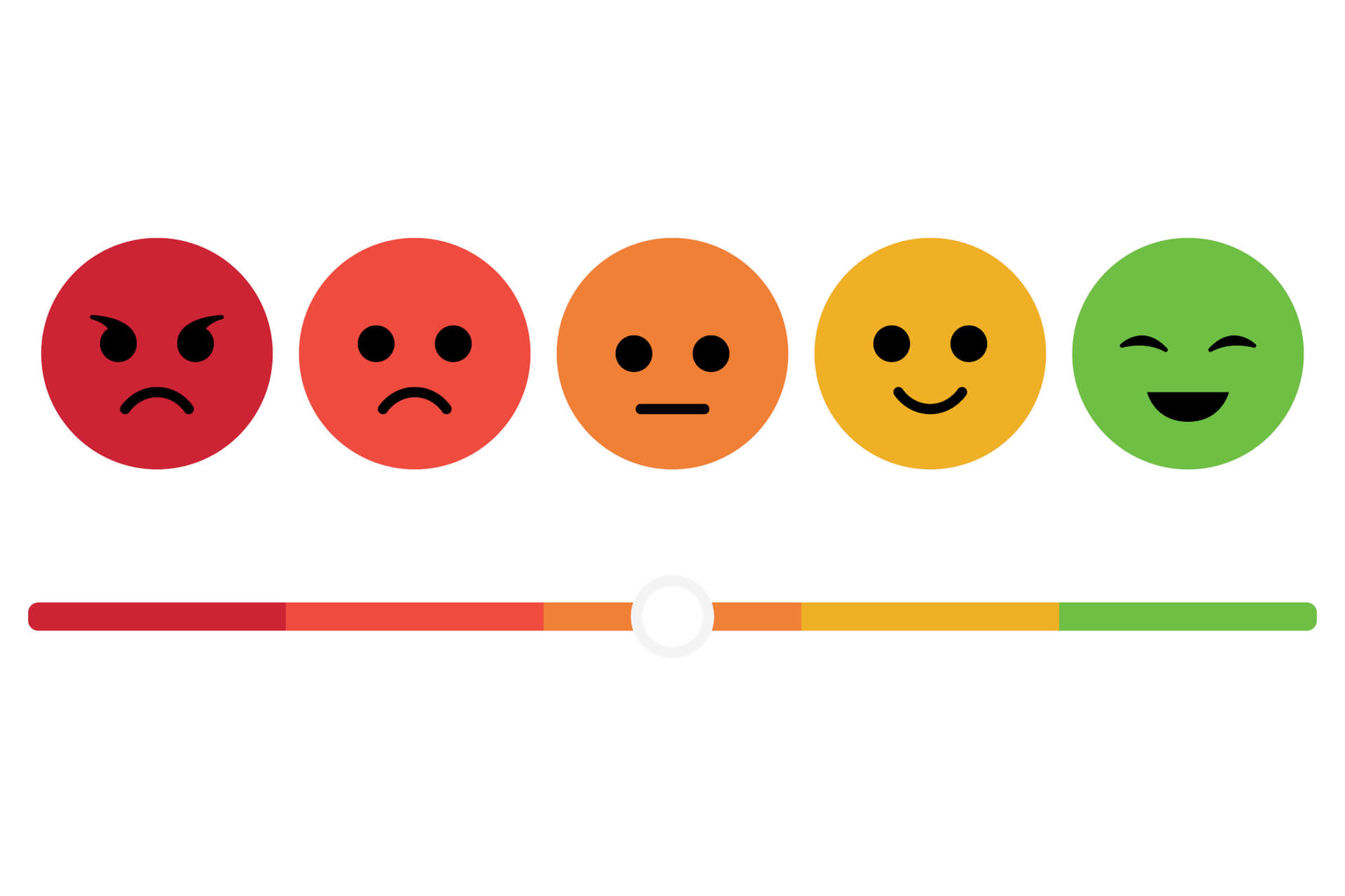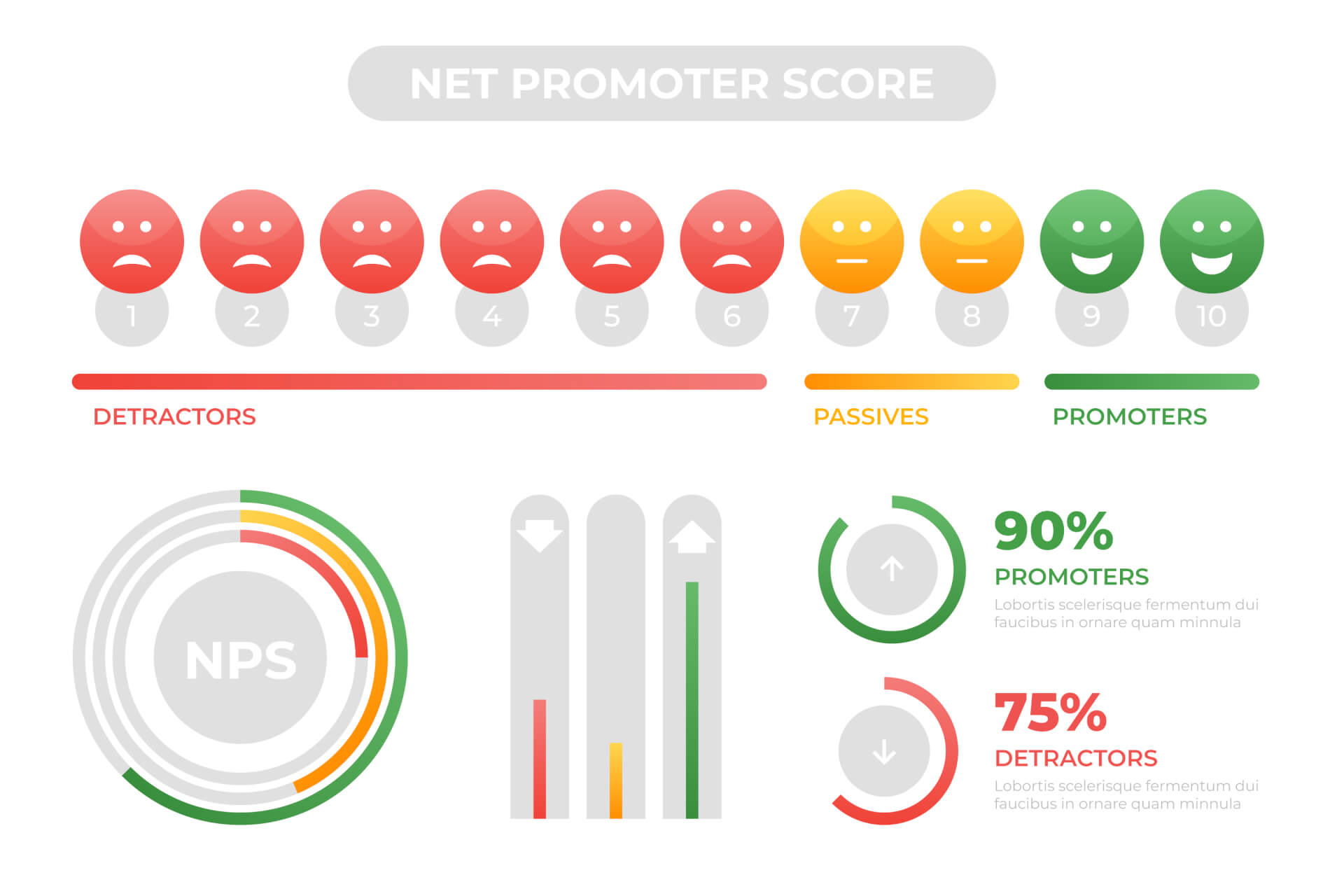This article aims to provide comprehensive insights into the best practices for leveraging NPS to enhance your customer experience strategy. By following these practices, businesses can ensure that their NPS efforts lead to meaningful improvements in customer satisfaction and loyalty.
NPS has become a cornerstone for businesses aiming to enhance their customer experience strategy. It works by asking customers a simple question:
"On a scale of 0 to 10, how likely are you to recommend our product/service to a friend or colleague?"
Based on their responses, customers are categorized into Promoters, Passives, and Detractors, which forms the basis for calculating the NPS.

Table of Contents
The Importance of NPS in Customer Experience Strategy
In today's competitive market, understanding and improving customer satisfaction is crucial for business success. NPS provides a straightforward metric that reflects customer loyalty and predicts business growth.
By regularly measuring NPS, companies can identify areas for improvement, foster stronger customer relationships, and drive positive word-of-mouth referrals.
Understanding NPS
 Net Promoter Score (NPS) is a customer satisfaction metric that quantifies the likelihood of customers recommending a company’s products or services.
Net Promoter Score (NPS) is a customer satisfaction metric that quantifies the likelihood of customers recommending a company’s products or services.
The score ranges from -100 to +100 and is calculated by subtracting the percentage of Detractors from the percentage of Promoters.
If you want to delve into the basics of NPS, please have a closer look at our Article "The Net Promoter Score – basics and areas of application" which provides a structured introduction to this metric.
NPS Best Practices for ...
1 - Implementation

Setting Clear Objectives
Before implementing NPS, it's essential to define clear objectives. Determine what you aim to achieve, whether it's improving customer service, increasing product satisfaction, or enhancing overall customer experience.
Designing Effective Surveys
Designing an effective NPS survey involves crafting clear and concise questions. The standard NPS question should be complemented with follow-up questions that provide deeper insights into customer sentiment and reasons behind their scores.
Choosing the Right Time to Survey
Timing is critical for capturing accurate feedback. Survey customers after significant interactions, such as after a purchase, service call, or product usage. This ensures the feedback is relevant and fresh in the customer’s mind.
Segmenting Your Audience
Segment your audience based on demographics, purchase behavior, or interaction history. This allows for more targeted and meaningful insights, helping you address specific issues faced by different customer segments.
Personalizing Survey Questions
Personalize your survey questions to resonate with different customer segments. Use their names, reference their recent interactions, and tailor questions to their specific experiences to increase engagement and response rates.
2 - Enhancing Response Rates

Optimizing Survey Length
Keep surveys short and to the point.
A lengthy survey can deter participation, so focus on essential questions that provide the most value. Aim for a survey length of five minutes or less.
Incentivizing Responses
Offer incentives such as discounts, loyalty points, or entry into a prize draw to encourage participation.
Incentives can significantly boost response rates, especially when the perceived value of the reward is high.
Using Multiple Channels
Distribute surveys through various channels like email, SMS, in-app notifications, and social media. Different customers prefer different communication methods, so a multi-channel approach ensures broader reach and higher response rates.
Ensuring Anonymity
Assure respondents that their feedback is anonymous. This encourages honest and candid responses, providing more accurate insights into customer sentiments and experiences.
3 - Analyzing NPS Data

Data Collection Methods
Use robust data collection methods to gather NPS responses. This includes online surveys, telephone interviews, and point-of-sale feedback mechanisms. Ensure the data collected is comprehensive and representative of your customer base.
Using Analytics Tools
Leverage analytics tools to process and analyze NPS data. Tools like Tableau, Power BI, and proprietary NPS software can help visualize trends, identify patterns, and uncover actionable insights from the data.
Identifying Key Drivers of NPS
Identify the key drivers that influence your NPS scores. Analyze qualitative feedback from follow-up questions to understand the reasons behind Promoter, Passive, and Detractor scores. This helps in pinpointing areas for improvement.
Segment Analysis
Perform segment analysis to understand the NPS scores of different customer groups. This can reveal valuable insights into specific needs and preferences, allowing for more tailored and effective customer experience strategies.
4 - Enhancing Customer Experience

Personalizing Customer Interactions
Use NPS feedback to tailor interactions with customers. Personalization can improve satisfaction and loyalty by addressing individual needs and preferences.
Implement personalized marketing campaigns, product recommendations, and customer support.
Improving Product and Service Offerings
Leverage NPS insights to enhance your products and services. Identify common pain points and areas for innovation.
Involve customers in product development through beta testing or feedback sessions to ensure their needs are met.
Streamlining Customer Support Processes
Use NPS feedback to identify inefficiencies in customer support. Implement process improvements and training programs to enhance the quality and speed of support. Satisfied customers are more likely to become Promoters.
5 - Taking Action on NPS Feedback

Closing the Loop with Customers
Respond to customer feedback promptly. Acknowledge their input, address their concerns, and inform them of any actions taken. This shows customers that their feedback is valued and contributes to building trust and loyalty.
Implementing Feedback
Use the insights gained from NPS feedback to make meaningful changes. Whether it's improving product features, enhancing customer service, or addressing specific pain points, implementing feedback is crucial for improving the overall customer experience.
Communicating Changes to Customers
Keep customers informed about the changes and improvements made based on their feedback. This can be done through newsletters, social media updates, or direct communication. Showing that customer feedback leads to tangible improvements can enhance customer loyalty and satisfaction.
Continuous Improvement
NPS should be part of a continuous improvement cycle. Regularly conduct NPS surveys, analyze the data, and refine your strategies based on the feedback. This iterative approach ensures that your customer experience strategy remains dynamic and responsive to changing customer needs.
6 - Keeping an eye on future Trends

Predictive Analytics and NPS
Predictive analytics can enhance the value of NPS by forecasting future customer behavior based on past feedback. This allows companies to proactively address issues and improve customer satisfaction before problems arise.
Real-time Feedback Mechanisms
Implementing real-time feedback mechanisms can provide immediate insights into customer experiences.
This enables quicker response times and more dynamic adjustments to customer service strategies.
AI and Machine Learning in NPS Analysis
AI and machine learning can be used to analyze large volumes of NPS data, identify patterns, and predict trends.
This technology can provide deeper insights into customer behavior and help tailor personalized experiences.
NPS in Omnichannel Customer Experience
Integrating NPS into an omnichannel strategy ensures that customer feedback is collected and analyzed across all touchpoints. This comprehensive approach helps in creating a seamless and consistent customer experience.
Conclusion
Recap of Key Points
Net Promoter Score (NPS) is a powerful tool for measuring customer loyalty and satisfaction. By following best practices such as setting clear objectives, designing effective surveys, enhancing response rates, and taking action on feedback, businesses can significantly improve their customer experience strategy.
Importance of Adapting NPS Strategies
As customer expectations and market conditions evolve, so should your NPS strategies. Regularly review and adapt your approach to ensure that it remains effective and relevant.
Final Thoughts and Recommendations
Incorporating NPS into your customer experience strategy provides valuable insights that can drive business growth and customer loyalty.
By continuously refining your NPS practices and integrating them with other metrics, you can create a customer-centric culture that fosters long-term success.
 Reading recommendation: If this article helped you and you would like to find out more about the Net Promoter Score, continue reading here: “The Net Promoter Score – Basics and Areas of Application”
Reading recommendation: If this article helped you and you would like to find out more about the Net Promoter Score, continue reading here: “The Net Promoter Score – Basics and Areas of Application”